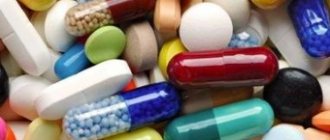Vegetovascular dystonia (VSD) is a syndrome that can be caused by the characteristics of the patient’s body or provoked by various external and internal factors. VSD often worsens in the fall. Attacks that occur every day exhaust a person and disrupt the quality of life. Drug therapy for exacerbation of VSD is often ineffective.
Doctors at the Yusupov Hospital provide preventive treatment for patients suffering from vegetative-vascular dystonia. Neurologists, endocrinologists, therapists, and gastroenterologists collectively decide on the patient’s examination regimen. Severe cases of vegetative-vascular dystonia are discussed at a meeting of the Expert Council, in which candidates and doctors of medical sciences take part. The medical staff is attentive to the wishes of patients and takes into account their emotional background.
Symptoms of vegetative-vascular dystonia
VSD syndrome can be of a constitutional nature, occurs against the background of endocrine changes, or develops with organic lesions of the central nervous system. Signs of constitutional VSD are:
- sweating;
- rapid change in skin color;
- fluctuations in heart rate and blood pressure;
- causeless rises in temperature to 39.0-37.10.
Patients do not tolerate physical and mental stress and changing weather conditions well.
The VSD syndrome, which developed during puberty against the background of endocrine dysfunction, is characterized by the following manifestations:
- vegetative-vestibular crises, which begin with dizziness and occur with a predominance of vagoinsular symptoms;
- hunger, thirst, libido;
- thermoregulation disorders, pathological paroxysmal drowsiness;
- attacks of temporal lobe epilepsy.
Hypothalamic syndrome is characterized by various combinations of autonomic, endocrine, metabolic and trophic disorders, which are caused by damage to the hypothalamus and its closest connections. Characteristic symptoms of VSD in women in the acute stage:
- ·early menopause;
- changes in the thyroid gland of hypothalamic origin;
- acromegaloid phenomena.
The electroencephalogram reveals changes that indicate the involvement of deep brain structures in the process. Damage to the hypothalamus is characterized by sleep and wakefulness disorders in the form of difficulty falling asleep, drowsiness during the day and superficial restless sleep at night.
When the connections between the hypothalamus and the temporal lobes of the brain are damaged, symptoms of temporal lobe epilepsy appear:
- aura 1–3 minutes with sensations of peristalsis, nausea, abdominal pain;
- pain in the heart area, rapid heartbeat, arrhythmia;
- labored breathing;
- increased salivation;
- involuntary chewing, swallowing;
- sweating followed by loss of consciousness and tonic-clonic convulsions.
If connections with the brain stem are affected, neurologists determine dilation of the pupils, dysfunction of the reticular formation with signs of narcolepsy, a neurological disorder in which a person loses the ability to control his own condition), cataplexy (a state of sudden loss of muscle tone while fully maintaining consciousness). Patients' sleep and wakefulness are disturbed.
The similarity of some symptoms of VSD with signs of endocrine diseases is the reason why doctors at the Yusupov Hospital conducted additional examinations. The manifestation of adrenergic crises creates the need to exclude pheochromocytoma. To exclude it, patients undergo suprarenography, pyelography, computed tomography, and scintigraphy. A urine test is performed during an attack to determine the level of catecholamines.
With VSD, there are no organic changes in all body systems; at the same time, functional disorders are determined, especially in the cardiovascular and digestive systems. Symptoms of VSD are most pronounced during an exacerbation.
Patients present the following complaints:
- weakness, fatigue, lethargy, especially in the morning;
- unpleasant sensations, discomfort or stabbing, pressing, burning, squeezing pain in the heart area of varying intensity;
- sensations of lack of air, dissatisfaction with inhalation, cough;
- anxiety, sleep disturbances, restlessness, irritability, excessive concentration of attention on the unpleasant symptoms of one’s illness;
- frequent headaches, dizziness;
- increased sweating;
- lability of blood pressure and vascular tone.
Depending on the prevailing changes in vascular tone, normotensive, hypotensive, hypertensive and mixed types of vegetative-vascular dystonia are distinguished. With the hypotonic type of VSD, signs of vascular insufficiency come to the fore. Blood pressure is below 100/60 mmHg. The patient is concerned about rapid fatigue, weakness, and a tendency to change blood pressure when moving the body from a horizontal to a vertical position. Fainting often occurs, preceded by darkening of the eyes and dizziness.
With the hypertensive type of VSD, blood pressure rises to more than 140/90 mm Hg. The leading complaints are:
- headache;
- fast fatiguability;
- rapid heartbeat, up to paroxysmal tachycardia.
In the area of the heart, areas of increased pain sensitivity are sometimes identified. Hypotonic and hypertensive types of VSD are accompanied by redness of the skin of the neck and face, coldness of the extremities, and marbling of the skin pattern.
If the patient is bothered by pain in the heart area, sometimes sharp, burning, stabbing, often poorly localized, palpitations, a feeling of interruptions in the work of the heart - this is a cardiac type of VSD.
Symptoms of VSD in the acute stage
The cardiovascular symptom complex in VSD is manifested by the following symptoms:
- changes in heart rate;
- lability of blood pressure;
- pathological vasomotor reactions (redness, cyanosis, pallor of the skin, hot flashes, chilliness of the feet and hands).
In the acute stage, burning, stabbing, pressing, throbbing pain or discomfort in the heart area is observed.
The respiratory symptom complex is manifested by increased ventilation (rapid deep breathing), psychogenic shortness of breath (sniffling, yawning, coughing, periodic deep breaths). Hyperventilation always accompanies anxiety. Shortness of breath is accompanied by dissatisfaction with inhalation, a feeling of lack of air, intermittent breathing, and a feeling of stopping breathing. In the acute stage, muscle spasms and a crawling sensation around the mouth and in the distal limbs occur. Neurologists define Chvostek's symptom - contraction of the muscle that raises the corner of the mouth when tapped in the projection of the facial nerve. Hyperventilation may cause the following symptoms:
- headache;
- fainting state;
- pain in the heart area;
- heart rhythm disturbance;
- abdominal pain, combined with increased peristalsis, nausea, and belching of air.
The gastrointestinal symptom complex is characterized by a disorder of the functions of the digestive organs. May exhibit the following symptoms:
- disturbances of appetite, motility of the esophagus, stomach or intestines;
- psychogenic dysphagia (difficulty, discomfort during the act of swallowing or the inability to take a sip);
- vomiting;
- feeling of heaviness in the epigastrium;
- transient flatulence (bloating);
- diarrhea;
- pain in the abdominal cavity.
The thermoregulatory symptom complex is manifested by an increase or decrease in temperature, chill syndrome. The vasomotor symptom complex consists of several symptoms:
- pallor, cyanosis of the skin;
- chilliness of hands, feet;
- sensations of hot or cold flashes;
- changes in dermographism (weak mechanical irritation of the skin when carried out with a blunt object causes a trace in the form of inflamed swelling);
- increased sweating of the palms and feet.
The genitourinary complex is characterized by cystalgia (frequent, painful, imperative urination in the absence of pathology of the urinary system or changes in urine) and sexual dysfunction (impaired erection or ejaculation in men, vaginismus or anorgasmia in women with preserved or reduced libido, painful menstruation). Hormonal fluctuations, including endocrine changes in the body after childbirth, and postpartum stress provoke an exacerbation of VSD symptoms.
The neurotic symptom complex is manifested by the following symptoms:
- fatigue;
- asthenia;
- low threshold of pain sensitivity;
- sleep disorders;
- irritability;
- senestopathies (pain in the heart, a feeling of dissatisfaction with inhalation, a burning sensation in different parts of the body).
VSD occurs with a wave-like increase and decrease in the manifestations of symptom complexes. This is due to changes in etiological factors and living conditions of the patient. An exacerbation of VSD may occur in the fall. Symptoms of the disease are most pronounced during a “vegetative storm” or crisis.
Vascular diseases: signs and treatment
22.10.2019
How can you help your blood vessels be healthy? What diseases are there that are common lately? The answer to this question is in this article.
A person lives and does not notice how his arteries and veins throughout the body help to supply nutrients and oxygen to the organs. Vascular diseases in our time, unfortunately, are one of the main causes of mortality. More often these problems occur in children and adolescents.
What diseases do blood vessels have?
Doctors divide types of vascular diseases according to their location; they find the source of the disease. If the central nervous system , then this disrupts blood circulation in the aortas and arteries of various parts of the body. Symptoms of different ailments may be different.
Atherosclerosis
This dangerous disease is quite insidious. Its main cause is “bad” cholesterol. It accumulates in the body with increasing consumption of junk food. Lead to atherosclerosis : diabetes , hypertension , obesity , bad heredity, bad habits.
Symptoms may vary. If we are talking about heart , then pain is usually noticeable in the left side of the chest , radiating to the arm. heart rhythm disturbances , weakness in the legs and arms, and possible fainting. With atherosclerosis dizziness and a burning sensation in the chest occur . If the abdominal region suffers, then problems appear with the gastrointestinal tract, kidneys abdominal pain . There are of atherosclerosis .
Ischemia
This disease occurs when there is insufficient blood in certain vessels that supply the myocardium and brain . Excessive exercise and stress can be its cause. In any case, it disrupts the body's carbohydrate-fat metabolism.
If a person has chest pain radiating to the arm, shortness of breath, arrhythmia, rapid pulse - this may be an indicator of ischemic diseases.
Strokes
A most insidious illness that has often appeared in people lately. Occurs from impaired blood supply to brain . In the process, nerve endings may die and their functions may deteriorate. At first, the symptoms are not noticeable. But if you have weakness and numbness in your arms and legs , as well as a throbbing headache, possible double vision and nausea your doctor immediately .
Hypertension
It seems something normal and not so scary. But symptoms such as pain in the back of the head, in the temples, tinnitus and dark spots before the eyes , dizziness , swelling of the limbs and nausea doctor about your condition . Otherwise hypertension , hypertension can lead to complicated diseases.
VSD
The development of VSD - vegetative-vascular dystonia - is observed when there is a malfunction in the functioning of the nervous system and weakening of blood vessels. insomnia can lead to this - all this is the cause of this disease.
Varicose veins
This is also not such a simple, although common, ailment. It is noticeable when venous patterns appear on the legs , but begins much earlier. If a person has bad heredity, he leads an incorrect lifestyle - all this can affect the blood vessels of the legs . Venotonics and compression garments can help, but this cannot be done without the advice of a doctor .
Diagnostics related to blood vessels
Once again it is worth recalling that only a doctor . An ordinary person may not understand the course of a particular disease and may prescribe the wrong and sometimes harmful medications to himself.
If you see a doctor , he will most likely prescribe a clinical blood . In some cases, biochemical and immunological tests, coagulogram, vascular angiography, ultrasound , MRI or RVG of vessels are also indicated.
It must be remembered that possible complications from vascular diseases are common and unpleasant, so consult a good doctor .
Remedies against vascular diseases
To treat vascular diseases, doctors use various drugs: myotropic and neurotropic drugs, blockers, cardiac drugs, drugs with nicotinic acid and others. But doctors remind: you need to eat right. To do this, you need to prepare dishes from cereals , bran, vegetable oils (especially olive), sea fish and seafood. Biscuits, bread, light vegetable or meat soups, nuts, legumes, seasonal berries and fruits are also useful. Doctors ask you to pay attention to the fact that you need to eat seasonal vegetables and fruits.
You also need to manage stress, regularly measure your blood pressure, take walks, have a hobby, do yoga and Pilates.
Published in Cardiology Premium Clinic









